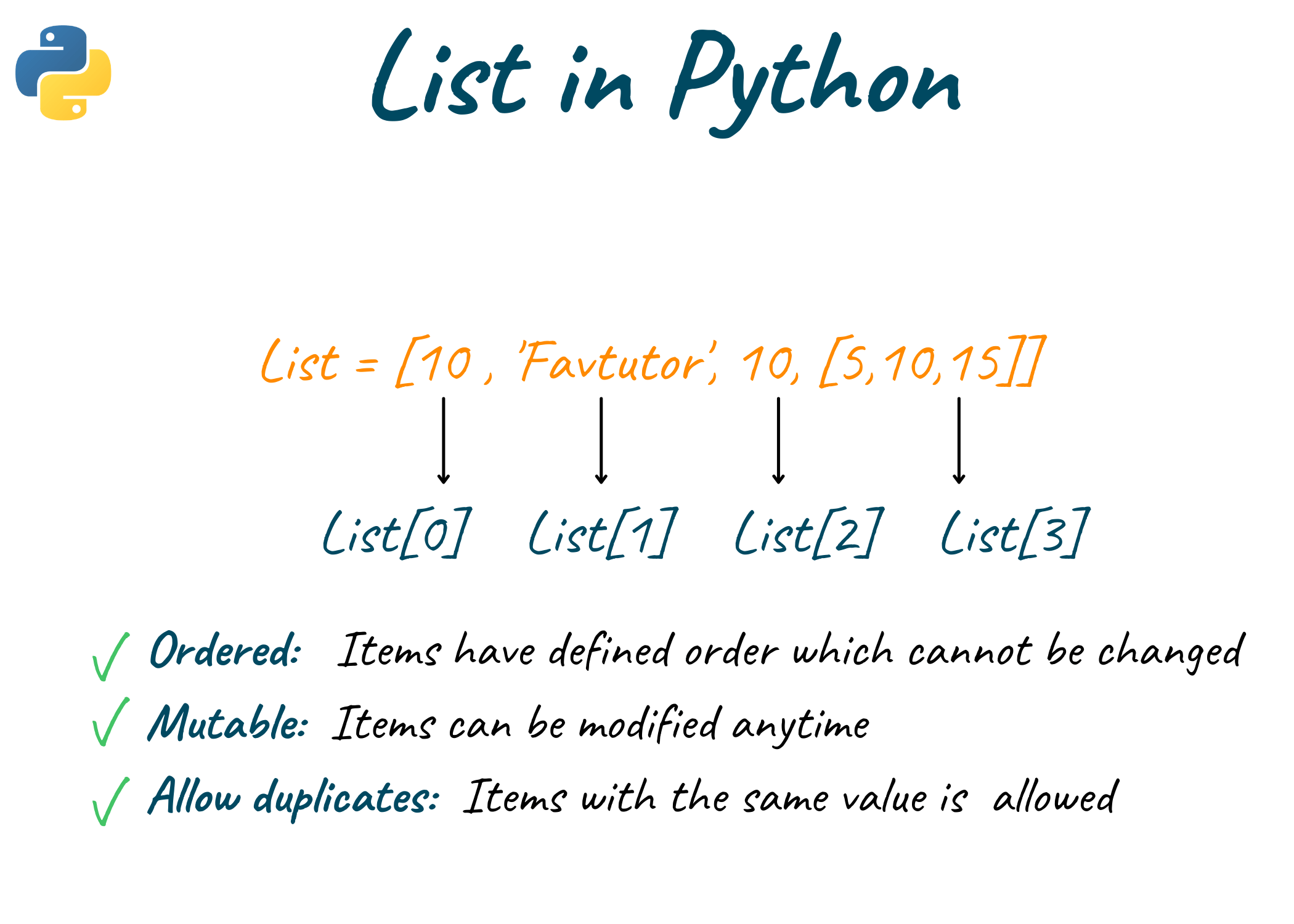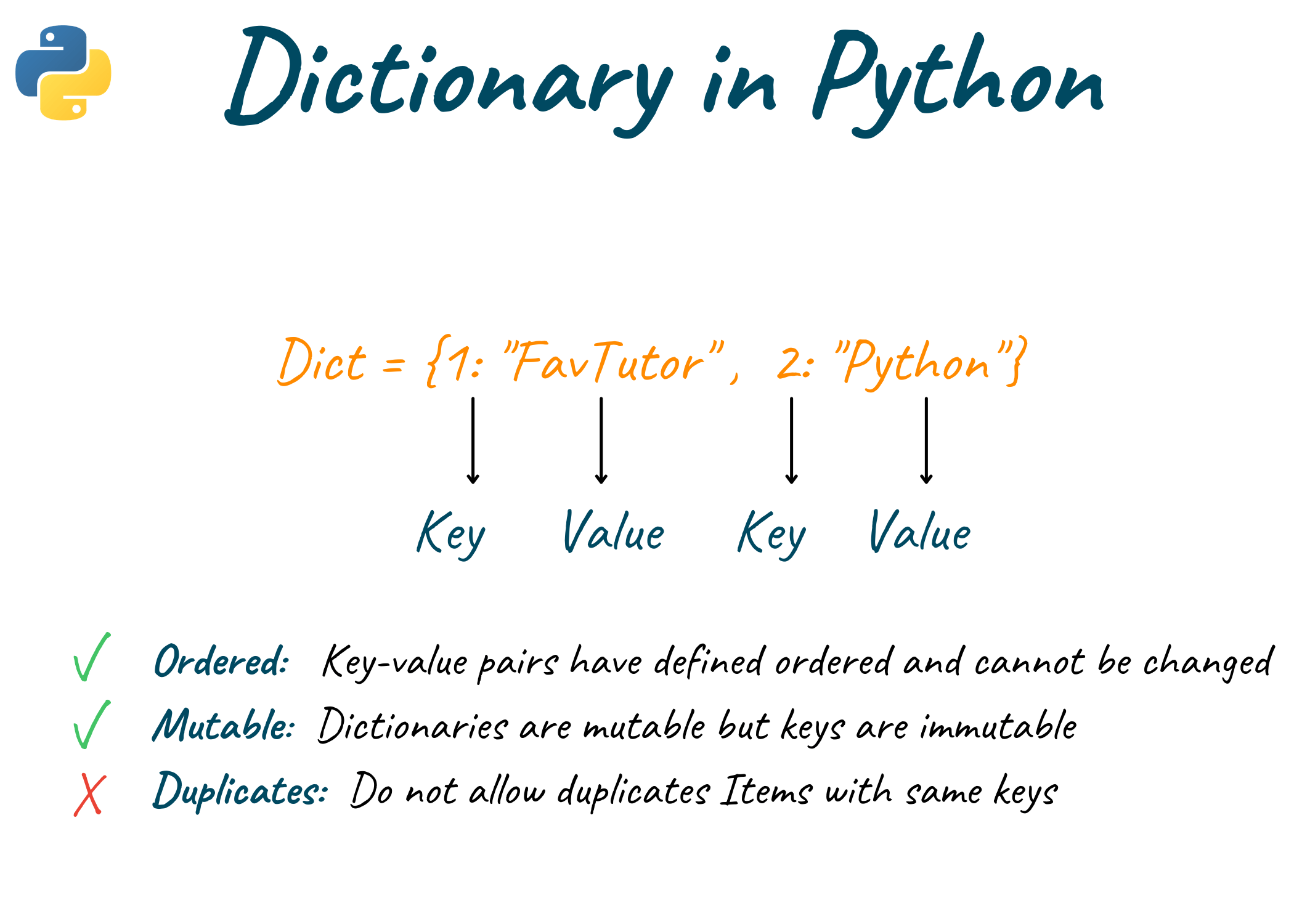Python supports various in-built data structures to make the programming easy and efficient like any other programming language. All these python data structures are sequential and store data collection in various formats, unlike others. List and dictionary are some of those python data structures that are simple yet powerful and store a wide range of data. This article will explain list and dictionary data structure and their difference and when to use list vs. dictionary in Python.
What are Lists in Python?
Python possesses a list as a data structure that is an ordered sequence of elements and mutable in nature. Each item or value that is inside of a list is called an element. Just as strings are defined as characters between quotes, lists are defined by having values between square brackets ([ ]) separated by commas.

A list is great to use when you have to deal with the related values. As lists are mutable, you can add, update or delete the elements of the list at any moment while programming. To learn more about the python list, refer to our article “5 Ways to Convert Set to List in Python".
For Example:
sample_list = ["Python", "is", "Fun"] print(sample_list)
Output
['Python', 'is', 'Fun']
What is Dictionary in Python?
Dictionary is a default python data structure used to store the data collection in the form of key-value pairs. Dictionaries are written inside the curly brackets ({}), separated by commas. However, the key and value of the data are separated by placing a semi-colon between them(:). Dictionary elements are ordered, changeable, and do not allow duplicates. Remember that the key name of every data value should be unique and are case-sensitive. Later, you can access the dictionary elements by simply using the key name and retrieving its corresponding data value.

For Example:
sample_dict = { "vegetable": "potato", "fruit": "banana", "chocolate": "gems" } print(sample_dict)
Output
{'vegetable': 'potato', 'fruit': 'banana', 'chocolate': 'gems'}
Difference between List and Dictionary in Python
|
Comparison Parameter |
List |
Dictionary |
|
Definition |
Collection of various elements just like an array in C++ |
Collection of elements in the hashed structure as key-value pairs |
|
Syntax |
Placing all the elements inside square brackets [], separated by commas(,) |
Placing all key-value pairs inside curly brackets({}), separated by a comma. Also, each key and pair is separated by a semi-colon (:) |
|
Index type |
Indices are integer values starts from value 0 |
The keys in the dictionary are of any given data type |
|
Mode of Access |
We can access the elements using the index value |
We can access the elements using the keys |
|
Order of Elements |
The default order of elements is always maintained |
No guarantee of maintaining the order |
|
Mutability |
Lists are mutable in nature |
Dictionaries are mutable, but keys do not allow duplicates |
|
Creation |
List object is created using list() function |
Dictionary object is created using dict() function |
|
Sort() |
Sort() method sorts the elements in ascending or descending order |
Sort() method sorts the keys in the dictionary by default |
|
Count() |
Count() methods returns the number of elements appeared in list |
Count() method does not exists in dictionation |
|
Reverse() |
Reverse() method reverse the list elements |
Dictionary items cannot be reversed as they are the key-value pairs |
When to use a dictionary vs list in Python?
The list is an ordered collection of data, whereas the dictionaries store the data in the form of key-value pairs using the hashtable structure. Due to this, fetching the elements from the list data structure is quite complex compared to dictionaries in Python. Therefore, the dictionary is faster than a list in Python. It is more efficient to use dictionaries for the lookup of elements as it is faster than a list and takes less time to traverse.
Moreover, lists keep the order of the elements while dictionary does not. So, it is wise to use a list data structure when you are concerned with the order of the data elements. Also, it is recommended to use a list data structure when dealing with the data values that might get changed in the future. It is because keys in the dictionary should be unique in nature, and it may cause problems while modifying them later. Moreover, dictionaries in Python require very little space to store the data elements in comparison to lists.
Looking at all the above parameters, it is quite obvious that dictionaries are better and more efficient to use compared to the python lists.
Applications of List
- Lists are used to store the data, which should be ordered and sequential
- Lists are used in the database
- It is used in JSON format
- Lists are highly useful for array operations
Applications of Dictionary
- Dictionary is used as a switch statement in Python
- It used to store large amounts of data for easy and quick access
- Dictionaries are used to build the indexes of the content
- Dictionaries are used when you wish to build the map objects
- It is used to create the data frame with lists
- Dictionaries are used in JSON
Conclusion
So far, we have seen that lists and dictionaries are the most fundamental data structures in python programming with their own differences in certain ways like syntax, storage method, implementation, etc. But even though being different from each other, they both are the most important data structure to work with when it comes to storing linear data while programming. To learn more about such programming concepts, check out other blogs by favtutor.








